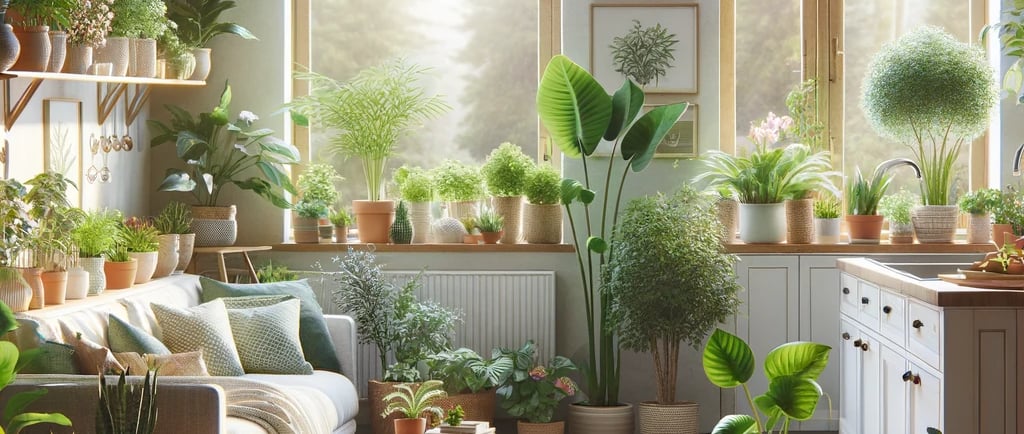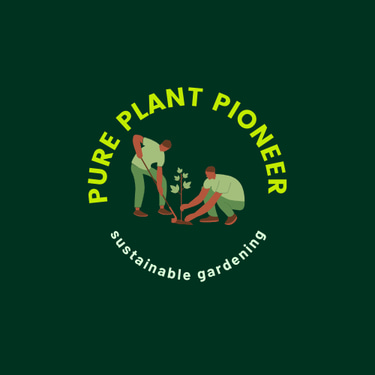Add your promotional text...
Indoor Gardening 101: How to Start Growing Plants Inside Your Home
Dive into the world of indoor gardening with our beginner-friendly guide! Learn how to assess your space, understand light requirements, and choose the right plants for your home. This comprehensive article covers everything from soil selection and planting to ongoing care, including watering, feeding, and troubleshooting common problems. Whether you're looking to purify your air, enhance your décor, or just enjoy the therapeutic benefits of plants, this guide will help you cultivate a lush, thriving indoor garden.
4/25/20243 min read


Indoor gardening offers a splendid opportunity to beautify your living space, improve air quality, and even produce your own herbs and vegetables year-round. Regardless of the size of your home, starting an indoor garden can be simple and rewarding. This comprehensive guide for beginners will walk you through everything you need to know about setting up an indoor garden, including understanding light requirements, choosing the right plants, and essential care tips.
Understanding Indoor Gardening
Indoor gardening involves growing plants within an indoor environment, using containers or specialized indoor gardening systems. Unlike outdoor gardening, it gives you control over the environment, allowing for customization of light, temperature, and humidity to suit specific plant needs.
1. Benefits of Indoor Gardening
Improved Air Quality: Many common houseplants are known to purify the air, removing toxins such as formaldehyde, benzene, and nitrogen dioxide.
Aesthetic Appeal: Plants add color, texture, and life to indoor spaces, enhancing the overall decor.
Reduced Stress: Studies show that interacting with plants can reduce stress and improve mood.
Accessibility: Indoor gardening makes horticulture accessible to those without yard space, including residents of apartments or urban areas.
2. Assessing Your Space
Before you start, assess your space considering the following factors:
Light: The amount of natural light available is crucial.
Humidity and Temperature: Some plants require higher humidity or specific temperature ranges.
Space: Determine how much space you can dedicate to your garden, including vertical space.
3. Light Requirements
Understanding light requirements is essential for successful indoor gardening:
Direct Sunlight: Some plants require direct exposure to sunlight, ideal for south-facing windows.
Indirect Light: Many houseplants thrive in bright, indirect light, suitable for east or west-facing windows.
Low Light: Areas that don’t receive much natural light can accommodate plants suited for low light conditions.
Artificial Lighting: Grow lights can supplement natural light, especially in rooms with small windows or during winter months.
4. Choosing the Right Plants
Selecting the right plants for your indoor garden depends on your environment and how much care you can provide. Here are some suggestions:
Low Maintenance: Spider plant, pothos, and snake plant are forgiving and require minimal care.
For Sunny Windowsills: Succulents like aloe vera, jade plant, and cacti thrive in direct sunlight.
For Edible Gardens: Herbs like basil, mint, and chives are excellent for kitchen window sills.
Air-Purifying Plants: Peace lily, Boston fern, and rubber tree are known for their air-purifying properties.
5. Soil and Planting Containers
Choosing the right soil and containers is crucial:
Soil: Use a high-quality potting mix that provides good drainage and aeration.
Containers: Ensure containers have drainage holes to prevent waterlogging. Consider the size and depth required by the root system of your chosen plants.
6. Planting and Potting
Follow these steps for potting your plants:
Fill the container: Use potting mix, leaving enough room for roots to spread.
Transplanting: Gently remove the plant from its current container and place it in the new one. Fill around the roots with soil, pressing down slightly.
7. Watering and Feeding
Watering: Overwatering is a common mistake in indoor gardening. Ensure the soil is dry at the top before watering again.
Feeding: Feed plants with a balanced fertilizer, following instructions on the label for dilution and frequency.
8. Ongoing Care and Maintenance
Pruning: Regular pruning helps control growth and removes unhealthy parts.
Pest Management: Keep an eye out for pests such as spider mites or aphids. Use natural pest control methods to deal with any infestations.
9. Troubleshooting Common Problems
Yellow Leaves: This may indicate overwatering or poor drainage.
Wilting Plants: Underwatering or excessive heat could be the cause.
Spots on Leaves: Check for pests or fungal infections.
Starting an indoor garden can be an enriching and enjoyable endeavor. With the right preparation and knowledge, you can cultivate a thriving indoor oasis that brings beauty and nature into your home year-round. Remember to start small, choose the right plants for your environment, and adjust care practices as you learn more about your plants' specific needs. Indoor gardening is not just about decorating your home but also about creating a healthier, more vibrant living space
